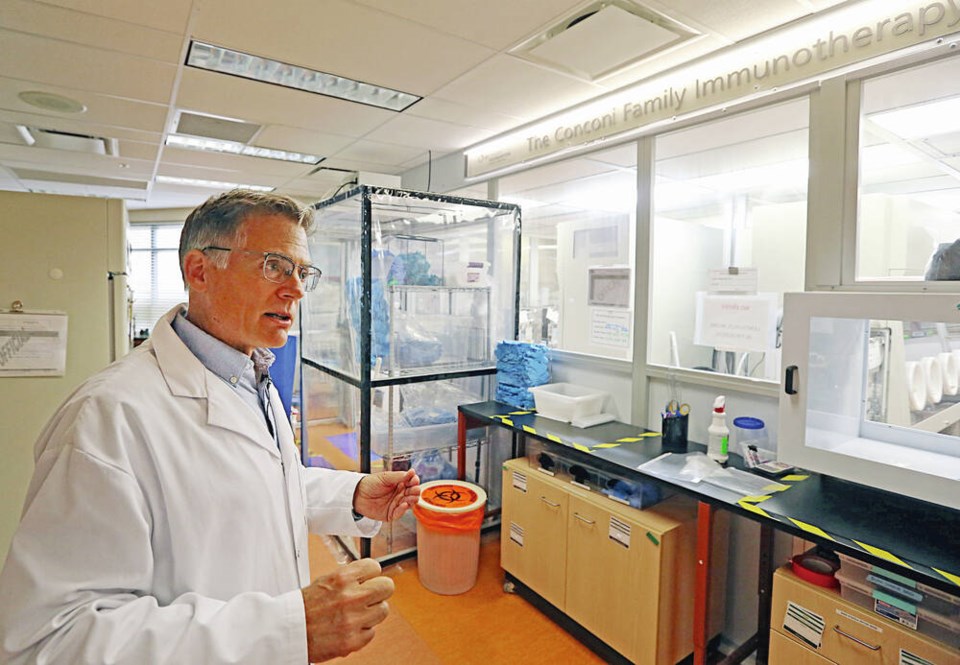A group of Canadian researchers, headquartered in Victoria, Vancouver and Ottawa, have come up with a practical way to produce a treatment for blood-related cancers like lymphoma and certain types of leukemia.
Their work is a huge step forward in fighting cancers that have not responded to other forms of treatment.
The procedure involves withdrawing white blood cells from the patient, isolating cancer-fighting T cells, then genetically enhancing those cells to fight the specific form of cancer the patient has.
Called CAR-T therapy, each infusion works only for the patient whose cells were used. That means a separate manufacturing procedure must be followed for every patient to be treated.
Although several steps are involved, the final product is assembled at the B.C. Cancer Clinic in Victoria.
The results are striking. Of the first 30 patients treated with CAR-T in an ongoing clinical trial, 13 saw their cancers disappear to the point of being undetectable, while many other patients experienced significant improvements.
And these were patients for whom nothing else had worked, and who in most cases were facing a terminal diagnosis.
Better still, while the therapy is expensive, it comes at a fraction of the cost of commercial versions produced in the United States.
So far, this therapy has proved effective only on blood-related cancers. Solid tumours appear better able to resist T-cells.
But Dr. Brad Nelson, the lead researcher at the B.C. Cancer Clinic in Victoria, believes progress can be made in treating other cancers, and presently his team is focused on applying this approach to ovarian cancer.
Nelson also believes it is only a matter of time before CAR-T therapy is expanded across a wide range of cancers.
The challenge, as always, is funding. Nearly all of the work to date has relied on charitable donations.
The federal government provided an initial grant, but that funding source has since dried up.
The provinces have also contributed some funding, but nothing close to what will be required if this made-in-Canada therapy is to achieve its full potential.
And that point needs reinforcing. A small group of researchers in B.C. and Ottawa have succeeded, against all the odds, in doing what the massive pharmaceutics industry in the U.S. has not accomplished.
They have produced a life-saving therapy at a fraction of the cost of the American version, and they’ve shown how this therapy can be expanded to treat other types of cancer.
However, there is a limiting factor. The patients treated so far have been enrolled in clinical trials.
This cannot continue indefinitely. Nelson estimates that about 100 patients a year could benefit from CAR-T therapy in B.C. alone, and perhaps as many as 1,000 Canada-wide. And those are just patients with blood-related cancers.
But it will not be practical to extend clinical trials over such a large group indefinitely.
What’s required is for both the provinces and the federal government to step up and give this project the backing, financial, legal and organizational help, that it needs.
There is an enormous opportunity here. Canada so far has made little progress in establishing a home-grown bio-engineering industry. We are well behind other industrialized countries.
Indeed, of the top 15 bio-engineering companies worldwide, none are located in Canada.
It’s too soon to talk of a cure for cancer. But the approach developed by Nelson and his colleagues opens doors that may eventually lead to that outcome.
We need Ottawa and the provinces to follow that lead and put Canada at the forefront of a life-saving technology.



